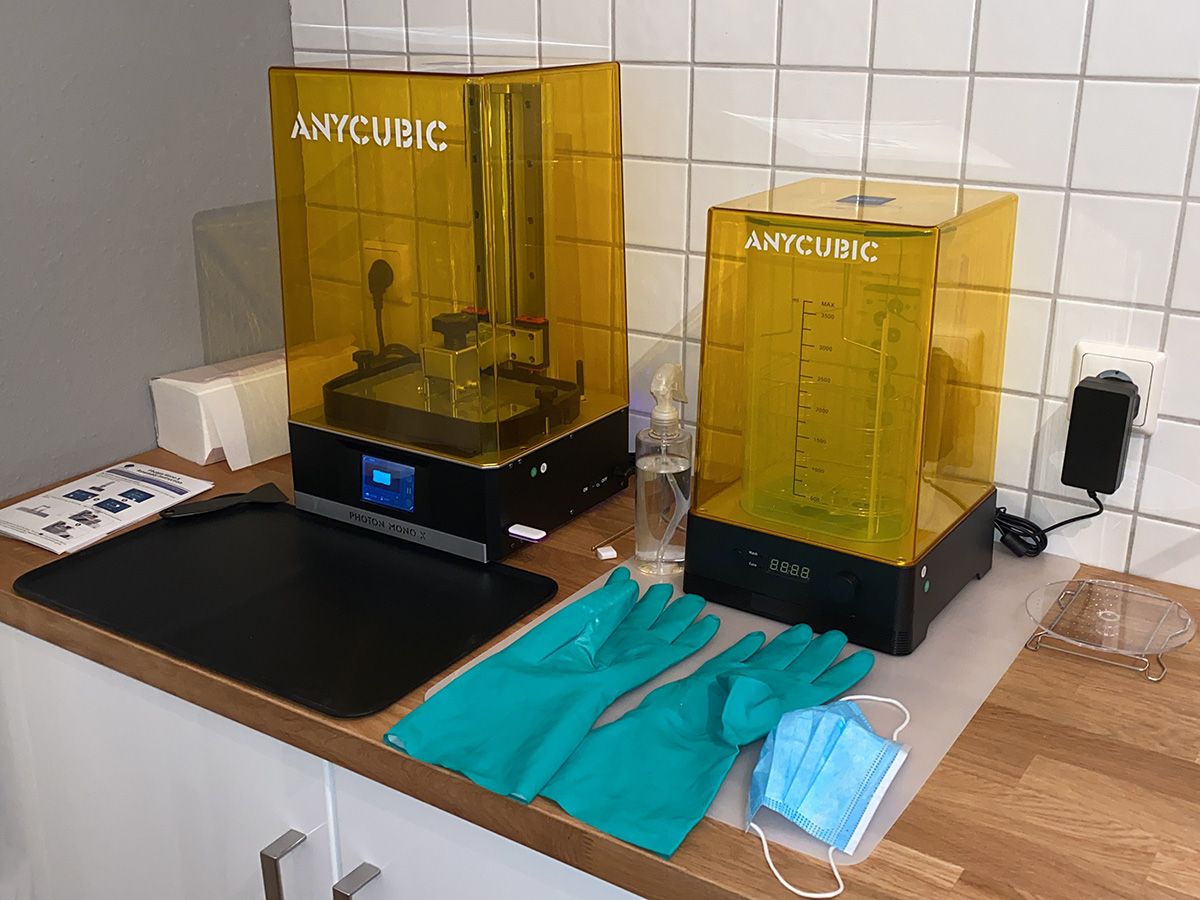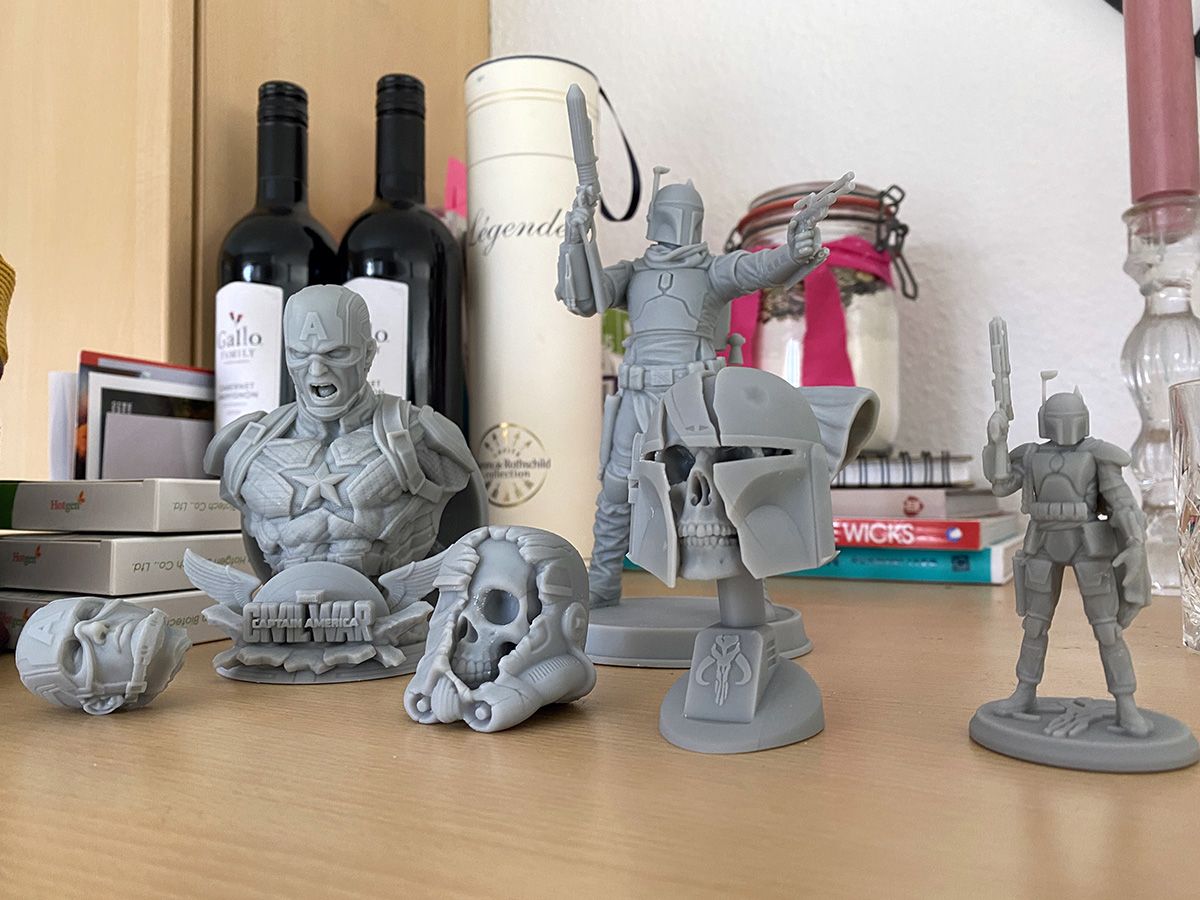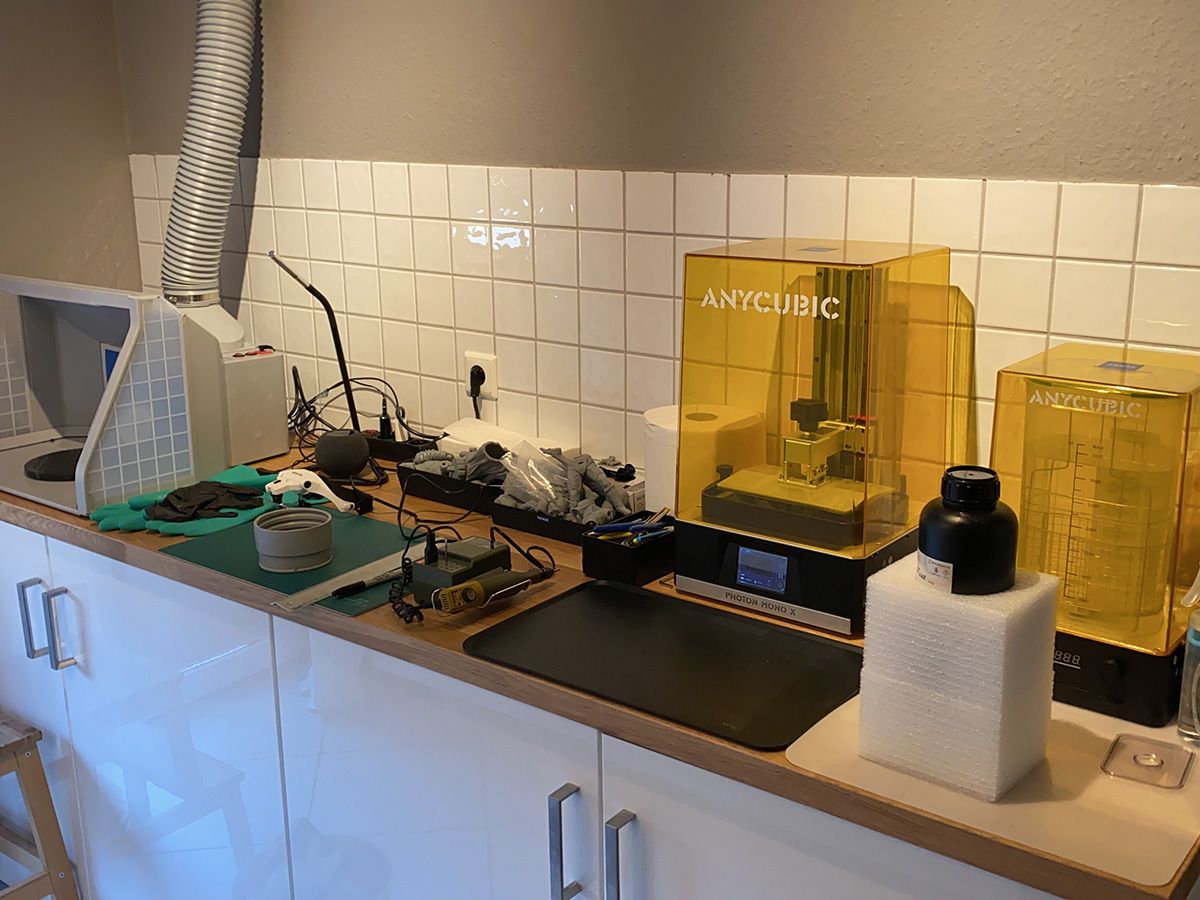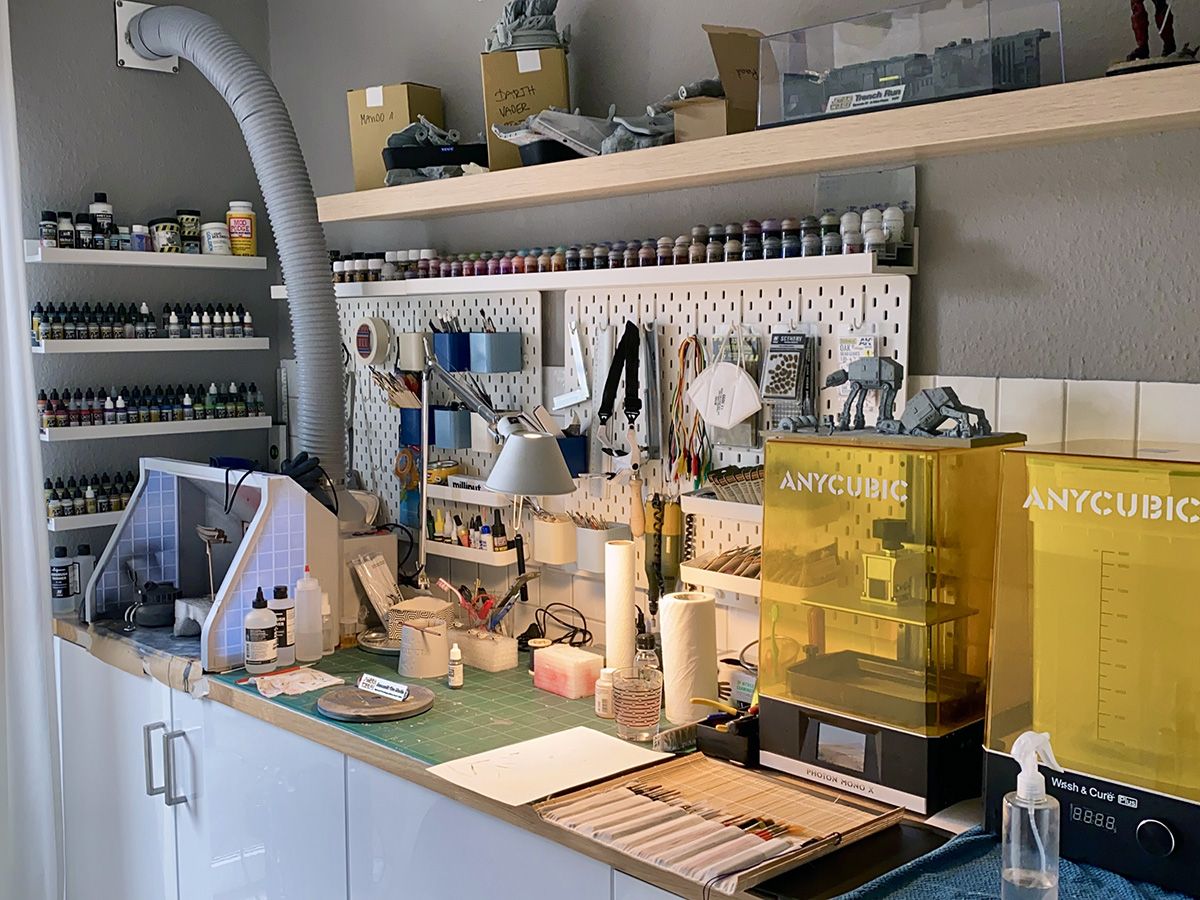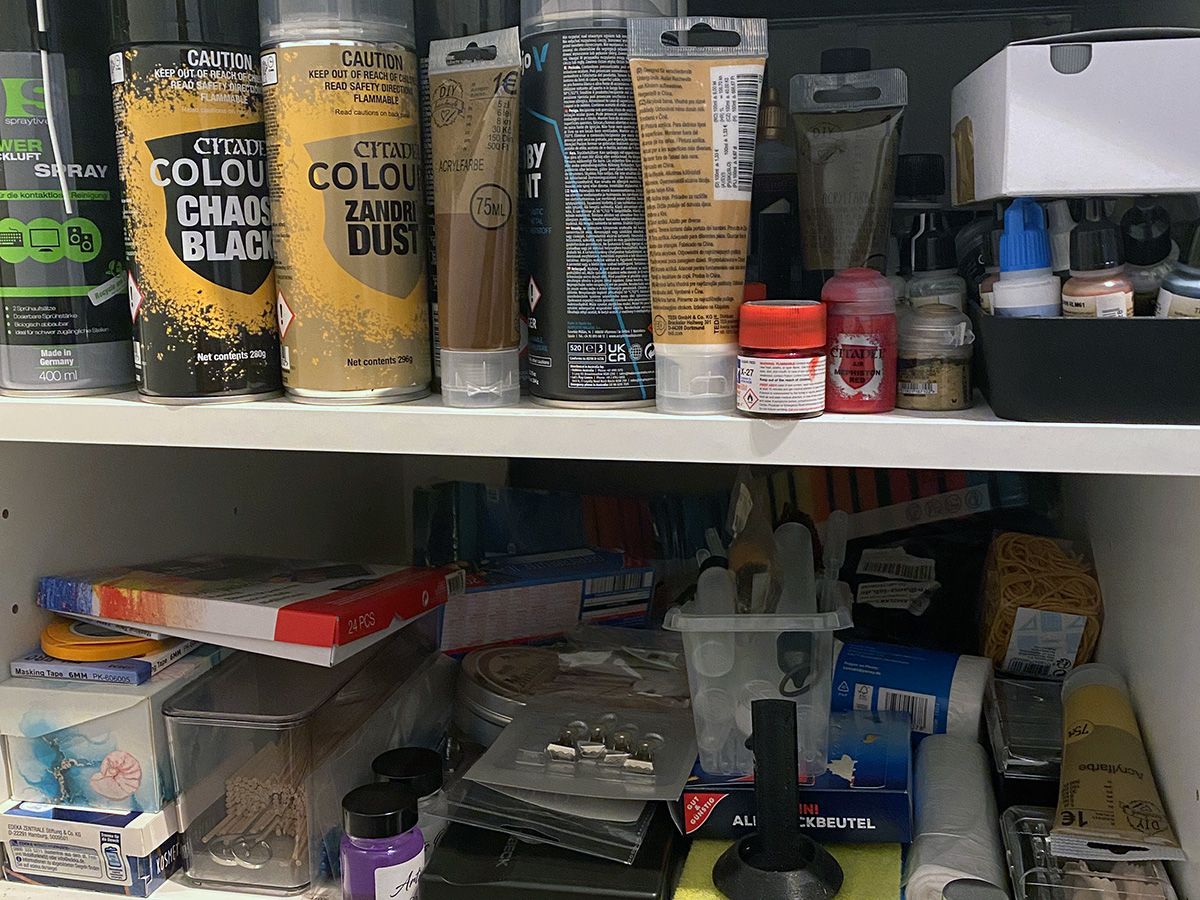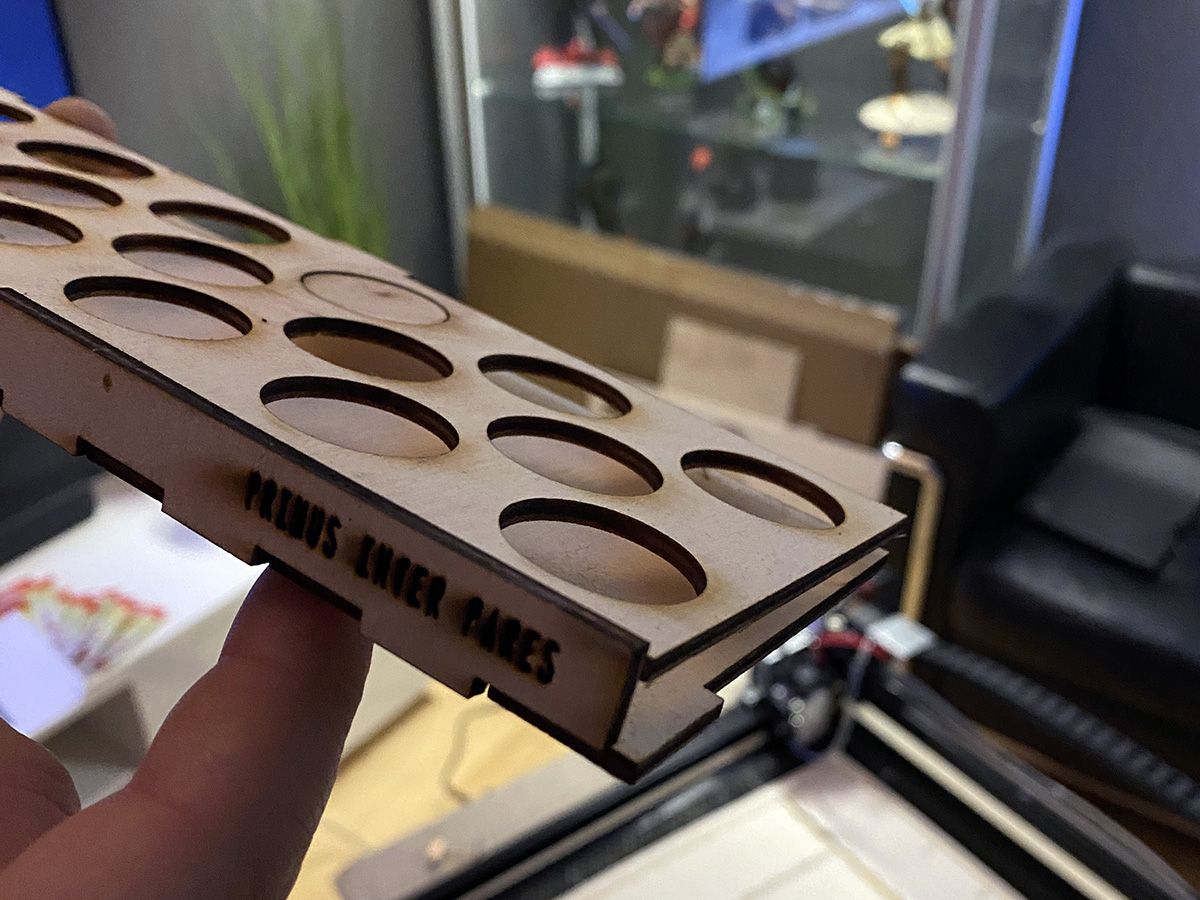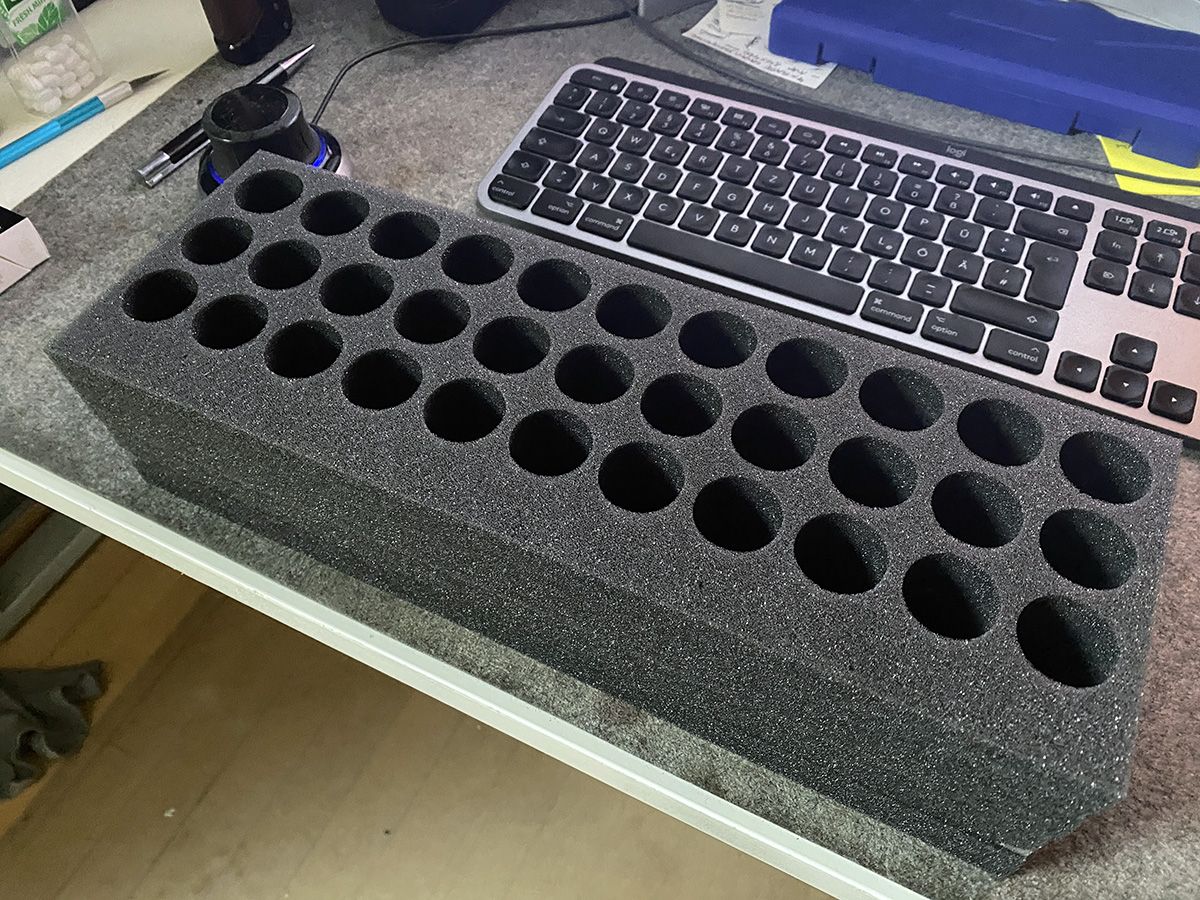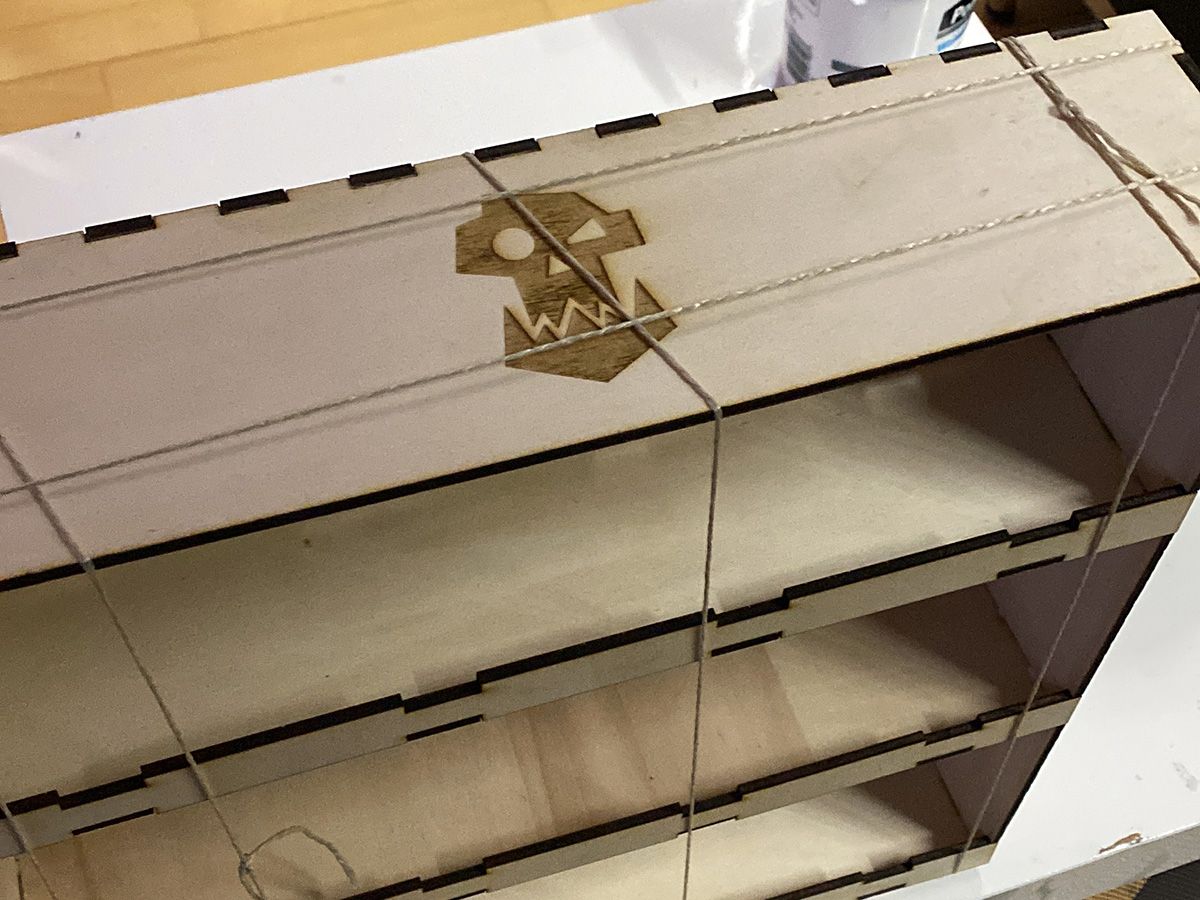'one.' - From Chaos To Order
Pandora's Box
The story of 'one.' and ultimately that of 'otaku' begins in the early summer of 2021. One day, a good friend of mine casually told me that he had bought a 3D printer so that he could finally print his own parts for his hobby. And although I'd been a freelance product designer since 1996, I didn't have a 3D printer to print my ideas. I was annoyed at my own stupidity and a short time later I was the owner of my own 3D printer - an Anycubic Mono X.
I successfully printed my first designs and was proud to finally be able to hold my ideas in my hands and bring them to life.
After my summer holidays, I stumbled across Wicked - a team of enthusiasts who create amazing 3D models of Marvel and Star Wars characters. The models reminded me of my childhood and the Star Wars figures I had. I was hooked and soon after became a Patreon.
I printed out the first Wicked models. After a while I got bored with the grey resin, so I bought my first paints and brushes and started painting the models.
I had opened Pandora's box.
Look, Mum, Dad's Collecting Sticks!
A few paints and some inferior brushes from the internet were quickly joined by more paints. Then better brushes, an airbrush gun and cabin, washes, diorama pastes, glue, polystyrene sheets, miniature bases, a Proxxon, suitable drills, milling and sanding bits, artificial snow and sandpaper. Then a sanding disc, a second, larger 3D printer, more resin, a hot wire cutter, even better brushes, putty and tufts and other terrain building equipment. On the first holiday after my first painted figures, I found myself sitting on the beach like a child, collecting sand and small branches - much to the amusement of my wife and my 12-year-old son. I now spent my evenings watching videos by popular YouTubers to learn or try out techniques. And, of course, painting. My collection of painting utensils and finished figures grew rapidly, and eventually I cleared out the old kitchen in my office and spread my hobby there. I now had well over 450 different paints from a wide range of manufacturers.
Where's The Frickin' Green?
My hobby den quickly descended into chaos. There were countless paints on the tables, brushes lying around - there was hardly any space for me to work efficiently. The chaos in the cupboards was even greater. Tubes of oil-based paints, various glues, spray cans, sandpaper, spare paints. This made my work even more chaotic. I spent more and more time looking for the right paints, tools and masking tape. Finally, the professional designer in me got the upper hand. I realised that if I wanted to work in a reasonably focused way, I needed to create some order and structure. So I designed and printed my first paint holders and used them, along with cheap picture rails, to create my organisation system. But the space they created quickly became too small. I needed a different, more sophisticated solution. It would have to be able to grow with the increasing need for order and the growing mass of paints. It had to be modular, variable and compact. It also had to be compatible with as many products as possible from well-known manufacturers, and it had to be wall-mountable to keep my desk free.
That was when the idea of 'one.' was born.
Light Burns
The first sketches were quickly made.
In the days that followed, three shelves of different sizes were created, sharing certain dimensions to ensure modularity. The smallest, square module was exactly half the height of the portrait module and half the width of the landscape module. The smallest shelf had three compartments, the two larger ones had six compartments each. I fitted the shelves with a system that could hold different inserts. These inserts were matched to the paints and products of a particular manufacturer and could hold different numbers of units depending on the size of the bottle. They could be easily removed and replaced with others as required. Right from the initial design stage I realised how flexible and practical this approach was. I designed the body of the shelf first, then some of the inserts and simulated the insertion, filling and removal in 3D.
I bought a laser cutter to cut and test prototypes. At this point I also decided to use only natural, sustainable materials for the shelves wherever possible.
Less, But Better
Over the following weeks I built several of the shelves in the three versions, designed and cut inserts for all my paints and rearranged my hobby den. I also created several different types of inserts, as I wanted to accommodate the maximum number of paint bottles in each compartment, depending on the type and size. This resulted in a total of five insert types: Planar, Step, Slope, Drawer and Foam.
Once the prototypes were mounted on my wall, I realised how much space and organisation I had created in my hobby room. The more time I spent painting from then on, the more I fell in love with the idea. Eventually I patented the shelves, their function, the inserts and the design, and gave the child a name: 'otaku'. In the end, I decided against the idea of three different shelf sizes. The smallest, square version offered the necessary modularity. I followed the example of Dieter Rams, one of Germany's most famous industrial designers, who once said: 'Less, but better'.
The prototypes had previously been given the working title 'bento' because they were reminiscent of bento boxes.
But 'otaku' describes us and our love of our hobby in one word. It comes from the Japanese and describes someone who 'devotes a great deal of time and passion to their hobby'. There is probably no better way to sum it up.
There's More To It...
A lot of time has passed since then.
I have built countless prototypes, sketched and refined detailed solutions and discarded many of them. 'one.' has become a product. It solves the problems we face every day in our hobby. It brings order and clarity. It gives us a quick overview of our paints and supplies and we decide what goes where according to our needs. And it grows with our requirements.
And even though I've been working on the 'one.' project almost every day for more than a year now, it still gives me new ideas for future solutions.
So I recently bought a new, powerful, huge laser, which I have named 'Red Devil'. And I'm already working on new ideas for 'one'. Some are made of wood, others of ceramics, and still others bring some light into darkness.
The story of 'one.' is far from over.

